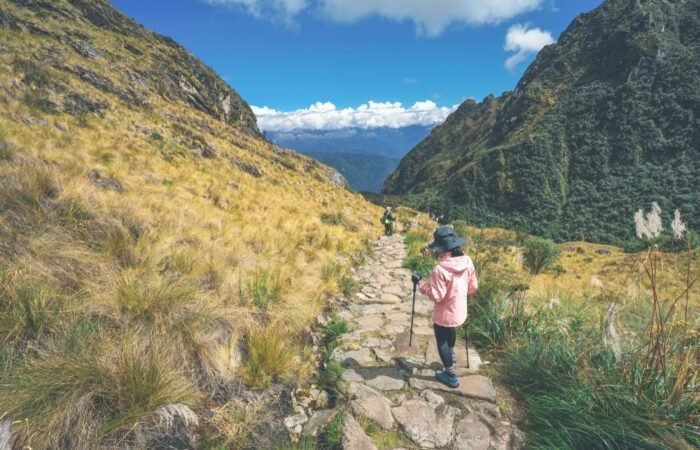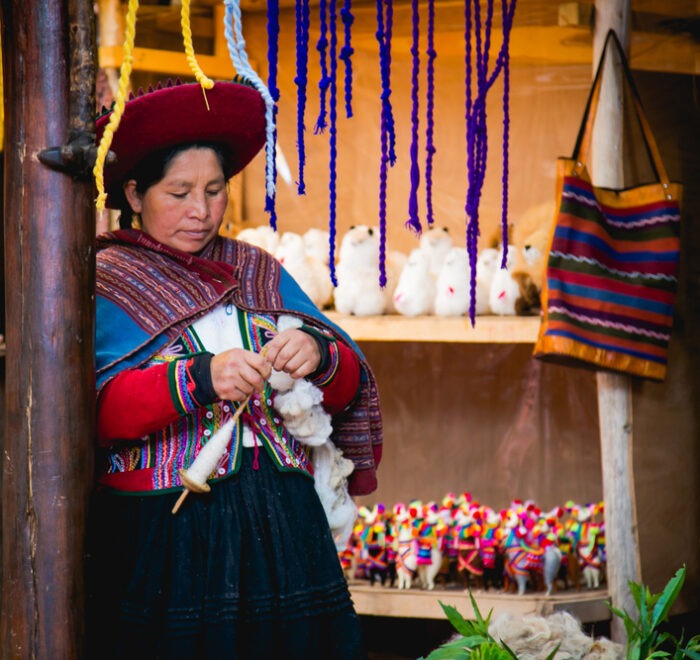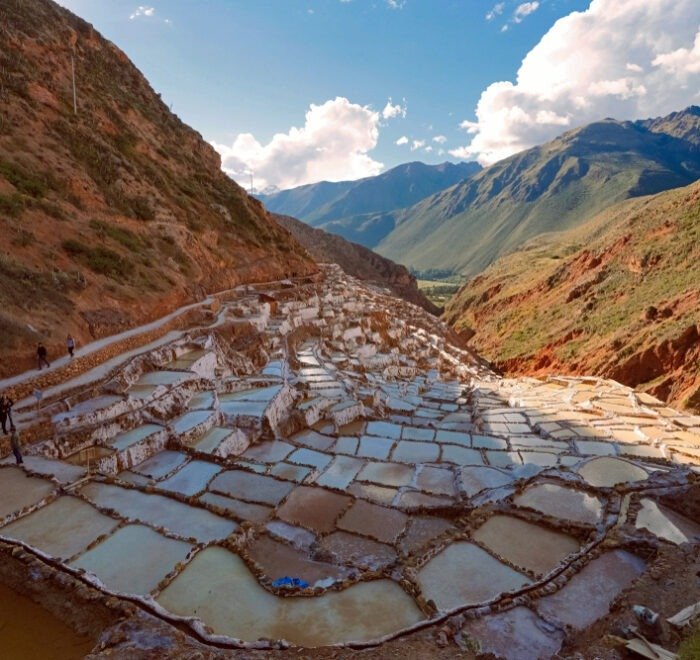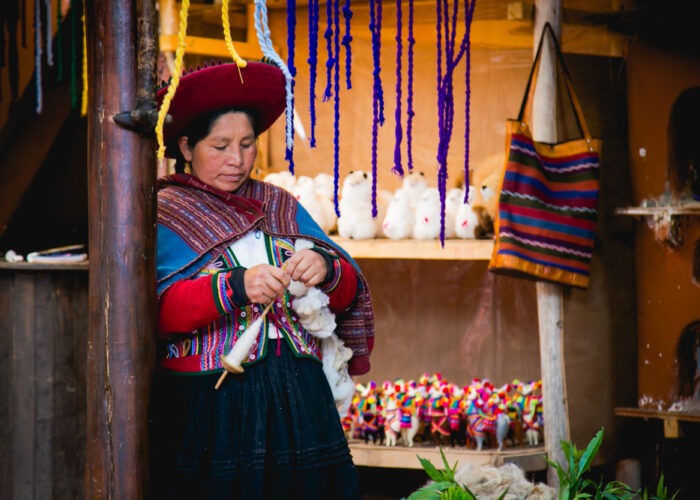


Cusco is the historical heart of South America and is home to a huge amount of archaeological and historical sites. As well as this, there are an array of great restaurants and bars to enjoy the delicious gastronomy of Peru.
For these reasons and more, hundreds and thousands of tourists visit the city every year. Many think that Machu Picchu is the only site to visit, but there’s so much more. Read on to find out the top places to visit in the city to learn more about its incredible past.

Cusco is the historical heart of South America and is home to a huge amount of archaeological and historical sites. As well as this, there are an array of great restaurants and bars to enjoy the delicious gastronomy of Peru.
For these reasons and more, hundreds and thousands of tourists visit the city every year. Many think that Machu Picchu is the only site to visit, but there’s so much more. Read on to find out the top places to visit in the city to learn more about its incredible past.

To make the most of your time in this wonderful city, you should try to visit as many of the sites as possible. This way, you’ll leave with a great knowledge of the history and some lovely memories. Below you’ll find all the one day tours.
To make the most of your time in this wonderful city, you should try to visit as many of the sites as possible. This way, you’ll leave with a great knowledge of the history and some lovely memories. Below you’ll find all the one day tours.
With all the incredible mountainous landscapes, there are plenty of trips to choose from. Some attract more visitors and some are off the beaten path and visited by very few. Take a look at the programmes we have to offer for one day hikes.
With all the incredible mountainous landscapes, there are plenty of trips to choose from. Some attract more visitors and some are off the beaten path and visited by very few. Take a look at the programmes we have to offer for one day hikes.
Before You Go, What You Should Know
To help you decide which of the places you want to prioritise, we’ve provided a short description of each.
Sat overlooking the Plaza de Armas (Main Square) of Cusco, this grand cathedral is a must. It was built between 1560-1654 and is even more beautiful on the inside. Attached to the cathedral is the smaller Triumph Church, which was the first Christian church in Cusco and built around the same time as the cathedral.
Within its walls, the cathedral boasts some incredible artifacts and relics, as well as some expert architecture. It’s an excellent example of the colonial art in the city.
It is said that Qoricancha was a political and religious centre during the Inca times. It was possibly the most important building at the time. Its name means Temple of the Sun, or Golden Temple, because its walls were covered in gold.
If you take a trip to the Santo Domingo Convent and Qoricancha you’ll find a detailed museum, original Inca structures that show off their amazing architectural skills, as well as the fascinating and beautiful convent. Unfortunately the gold is no more, as during the Spanish invasion it was all taken. However, it’s one of the most visited places in the city and is a great addition to your itinerary.
Situated 7km from the city centre of Cusco, you’ll find Tambomachay. Experts believe that the site was very important for the worship of water, which is why it’s sometimes known as the ‘Inca Baths’.
You’ll find an interesting complex of canals, walls, and windows. These all show how great the Incas were at architecture and understanding hydraulics. It’s very close to the city of Cusco, so can easily be visited during the morning or afternoon.
Puca Pucara is another Inca site close to Cusco that was a military construction. The fort is made up of large walls, terraces, and steps. It was part of the defensive buildings that protected the city from invasion.
Puca Pucara in Quechua means ‘Red Fort’. It got this name due to the red color the rocks took on during sunset. As well as being a military centre, it was used for administration.
This archaeological site was a former administrative centre as well as an entrance to the Antisuyo corner of the Inca Empire. It sits in the north of the Sacred Valley. During the Spanish invasion, it was the last stronghold for the Inca leader at the time.
The town itself is quaint and home to the train station from where many tourists set off to go to Machu Picchu. The ruins sit up high overlooking the main square of the small town.
Pisaq is another site in the Sacred Valley of the Incas. As well as the inca ruins there, you’ll find a large market 3 times a week on Sunday, Tuesday, and Thursday. This attracts many tourists from all around.
The terraces constructed by the Incas above the town are still used today. The archaeological site served at least three purposes in its day. These were military, religious, and agriculture.
These are two sites about an hour out of Cusco. They are often visited together as they are very close to each other. Maras is fascinating as they are salt mines that are still in use today and have been around since the time of the Incas. They make for an incredible sight when you look out over them.
Moray was likely used for farming in the time of the Incas, but it’s unclear. The site itself is very unique, and almost looks as though something extra-terrestrial created it. It’s a view you shouldn’t miss when in Cusco.
A Cusco day tour is a guided tour of the city of Cusco and its surrounding areas that typically lasts one day. It is a great way to explore the culture, history, and natural beauty of the region, as well as some of the most famous attractions like Machu Picchu, the Sacred Valley, and various historical sites in and around Cusco. These tours are usually led by experienced guides who provide insights into the local culture and history, making for a more enriching and memorable experience.
The cost of Cusco day tours can vary widely depending on the tour operator, the activities included, and the duration of the tour. Generally, you can expect to pay anywhere from $30 to $200 per person for a Cusco day tour.
Tours that visit popular destinations like Machu Picchu or the Rainbow Mountain tend to be more expensive due to the entrance fees and transportation costs. Similarly, tours that include activities like hiking or rafting may also be more expensive.
It’s important to do some research and compare prices from different tour operators to find a tour that fits your budget and preferences. Additionally, some tour operators may offer discounts for groups or for booking multiple tours, so it’s worth checking for any available promotions or deals.
There are several popular Cusco day tours that you can choose from depending on your interests and preferences. Here are a few examples:
Machu Picchu Day Tour: This is a full-day tour that takes you to the world-famous Machu Picchu, one of the most popular tourist destinations in Peru.
Sacred Valley Tour: This tour takes you through the beautiful Sacred Valley of the Incas, where you can explore Inca ruins, traditional villages, and local markets.
Rainbow Mountain Tour: This tour takes you to the stunning Rainbow Mountain, a natural wonder known for its vibrant colors and breathtaking views.
Maras and Moray Tour: This tour takes you to the ancient salt mines of Maras and the fascinating circular terraces of Moray, both of which are impressive engineering feats.
Cusco City Tour: This tour takes you to some of the most famous landmarks and attractions in the city of Cusco, including the Cathedral, Qoricancha Temple, and Sacsayhuaman Fortress.
These are just a few examples of the many Cusco day tours available, and there are many other options to choose from depending on your interests and preferences.
Cusco day tours typically last for a full day, usually between 8-12 hours depending on the specific tour and itinerary. However, some tours may be shorter or longer depending on the activities and destinations included. It’s important to check the duration of the tour before booking to ensure that it fits your schedule and preferences. Keep in mind that some tours may involve hiking or walking for extended periods, so it’s important to be prepared for physical activity and to bring comfortable clothing and footwear.
Here are some essential items you should bring on a Cusco day tour:
Comfortable walking shoes: Most Cusco day tours involve some walking or hiking, so it’s important to wear comfortable shoes.
Water bottle: It’s important to stay hydrated during your tour, especially if you plan on visiting high altitude areas. Bring a water bottle with you and refill it as needed.
Snacks: Some tours may not include meals, so it’s a good idea to bring some snacks to keep you energized throughout the day.
Sunscreen and sunglasses: Cusco can be very sunny, so it’s important to protect your skin and eyes from the sun.
Hat or cap: A hat or cap can also help protect you from the sun.
Camera: Cusco is a beautiful city with many amazing sights and photo opportunities. Bring a camera to capture your memories.
Cash: Bring some cash for souvenirs or snacks. Many places in Cusco may not accept credit cards or other forms of payment.
Jacket or sweater: The weather in Cusco can be unpredictable and may change throughout the day, so it’s a good idea to bring a jacket or sweater.
Personal medication: If you have any personal medication, make sure to bring it with you.
Backpack or bag: Bring a small backpack or bag to carry all of your essentials. Make sure it’s comfortable to wear and has enough space to fit everything you need.
Most Cusco day tours do include transportation, either by bus or van, to the different destinations included in the itinerary. The type of transportation can vary depending on the tour operator and the specific tour.
For example, tours that visit Machu Picchu may include a train ride from Cusco to Aguas Calientes, the town located at the base of the mountain where Machu Picchu is located. From there, you may take a shuttle bus or hike up to the site.
Other tours may include transportation by van or bus to different sites around Cusco, such as the Sacred Valley, Maras and Moray, or the Rainbow Mountain.
It’s important to check with the tour operator to confirm what type of transportation is included in the tour and if any additional transportation costs may apply.
The inclusion of meals in Cusco day tours can vary depending on the tour operator and the specific tour. Some tours may include meals, while others may not.
For example, some tours that visit Machu Picchu may include a boxed lunch or a meal at a local restaurant in Aguas Calientes. Tours that visit the Sacred Valley or other destinations may also include meals at local restaurants or markets.
It’s important to check with the tour operator to confirm if meals are included in the tour, and if so, what type of meals are provided. If meals are not included, it’s a good idea to bring some snacks or pack a lunch to bring with you on the tour. Additionally, some tours may provide stops at local markets where you can purchase food and snacks.
Many Cusco day tours are suitable for children, although it ultimately depends on the age and interests of your child. Some tours may not be suitable for very young children, while others may be more appropriate for older children or teenagers.
It’s important to check with the tour operator to confirm if the tour is suitable for children and if there are any age restrictions or requirements. Additionally, some tours may offer child pricing or special activities for children, such as treasure hunts or educational programs.
If you’re traveling with young children, it’s important to consider their needs and interests when selecting a tour. Some tours may involve a lot of walking or hiking, which may not be suitable for young children. Others may include more interactive or educational activities that may be more engaging for children.
Overall, there are many Cusco day tours that are suitable for children and can provide a fun and educational experience for the whole family.
It is recommended to book Cusco day tours in advance, especially during peak tourist season (June-August) and for popular tours such as Machu Picchu or the Rainbow Mountain. Booking in advance ensures that you have a spot on the tour and can also help you save time and avoid long lines at the entrance of attractions.
Additionally, some tours may require advance booking due to limited availability, such as train tickets to Machu Picchu or entrance permits to the Rainbow Mountain. It’s important to check with the tour operator for any specific booking requirements or recommendations.
That being said, there may be some tours that are available for last-minute bookings, especially for off-season travel or less popular tours. However, it’s still recommended to book in advance to ensure availability and avoid disappointment.
The best time of year to take a Cusco day tour depends on your preferences and the specific activities you’re interested in. Generally, the peak tourist season in Cusco is from June to August, which coincides with the dry season. During this time, you can expect sunny weather and clear skies, which is ideal for outdoor activities such as hiking or sightseeing.
However, the peak season can also mean higher prices and more crowds, especially at popular destinations such as Machu Picchu. If you prefer to avoid the crowds and don’t mind the possibility of rain, the shoulder season (April-May and September-November) can be a good option. During these months, the weather is generally mild and there are fewer tourists.
The rainy season in Cusco is from December to March, which can make some activities such as hiking more challenging due to muddy trails and landslides. However, the rainy season also means lush green landscapes and fewer tourists, which can make for a unique and peaceful experience.
Ultimately, the best time of year to take a Cusco day tour depends on your personal preferences and interests. It’s important to research the weather and crowds for the time of year you’re considering and to book your tour in advance to ensure availability.











